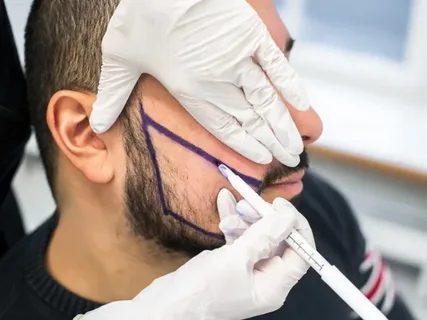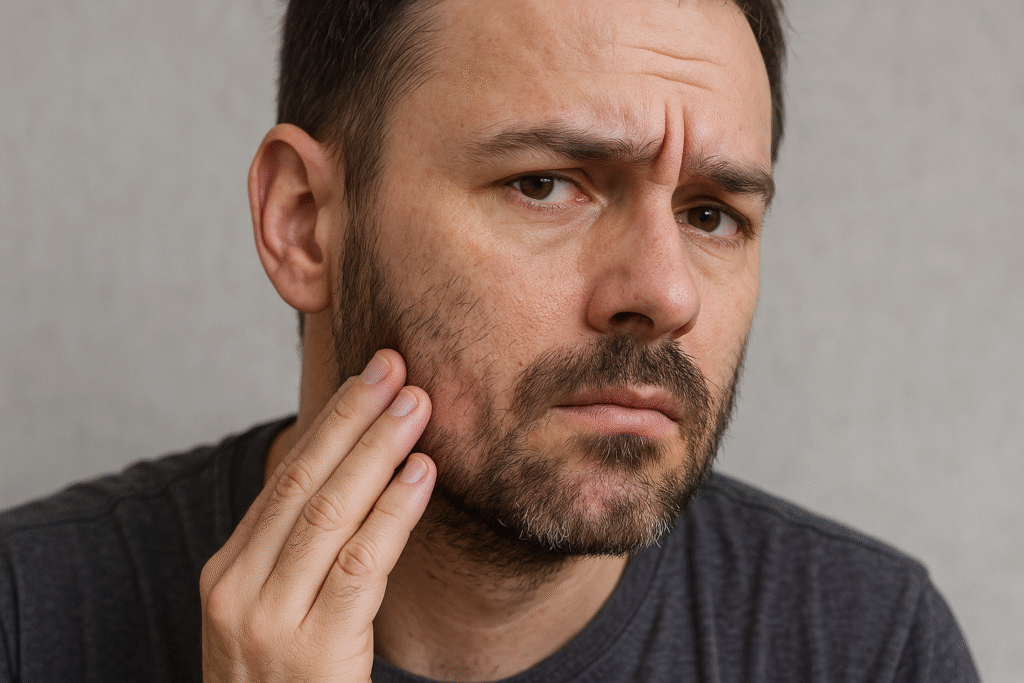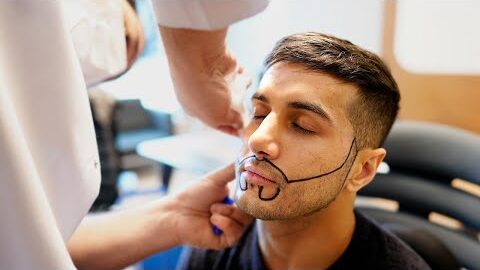Dealing with severe hair loss and running out of scalp donor hair? You may be searching for alternatives and asking, How beard hair transplants work for scalp restoration.
This procedure uses robust beard follicles to restore thinning or bald areas on the head.
Learn how beard hair offers increased graft availability, stronger hair shafts, and natural-looking results, especially in advanced cases.

Backed by expert techniques and clinical success, this guide helps you understand if beard-to-scalp transplants are the right solution for achieving fuller, lasting hair restoration.
READ MORE: Do Guys Care If You Have Pubic Hair? What You Should Know
What is a Beard Hair Transplant?
A beard hair transplant involves taking hair follicles from the beard area and transplanting them to the scalp.
This procedure is beneficial for individuals who may not have enough scalp hair for a traditional transplant but have sufficient facial hair.
Typically, Follicular Unit Extraction (FUE) is used for harvesting hair follicles from the beard area.
Beard hair is an excellent donor source because it tends to be coarse and has similar growth cycles to scalp hair, making it a viable option for restoring hair on thinning or bald areas of the scalp.
Benefits and Considerations
Benefits:
- Alternative Donor Hair Source: For those with limited scalp hair, beard hair provides an excellent alternative.
- Minimal Scarring: FUE is a minimally invasive technique that leaves no linear scars and has a faster recovery.
- Long-Lasting Results: Beard hair transplanted to the scalp can grow naturally and last a lifetime, offering permanent results.
- Natural-Looking Outcomes: The hair matches the texture and color of scalp hair, providing a natural, seamless look.
Considerations:
- Texture Differences: Beard hair may be thicker and curlier than scalp hair, which may result in slight differences in appearance.
- Donor Hair Availability: The amount of beard hair available for transplantation can limit the number of grafts that can be used.
- Post-Procedure Care: Aftercare is crucial to ensure successful graft survival and proper healing.

Procedure Steps and Recovery Timeline
Step 1: Initial Consultation Dr. Rana Irfan will assess your scalp and beard to determine if you’re a suitable candidate for the procedure. He will discuss your expectations, explain the process, and evaluate your donor area.
Step 2: Harvesting Beard Hair Using FUE, individual hair follicles are carefully extracted from the beard area. The process is minimally invasive, and no stitches are required.
Step 3: Transplantation The harvested follicles are transplanted to the thinning or bald areas of the scalp. This procedure is done under local anesthesia, ensuring comfort throughout the process.
Step 4: Recovery
- Immediate Recovery: Most patients can return to regular activities within a few days. There may be some redness or swelling at the donor and recipient areas, which typically resolves in a week.
- Full Recovery: It may take several months for the transplanted hair to start growing. Full results can be seen within 6-12 months.
Expected Outcomes (No Exaggerated Claims)
While beard-to-scalp hair transplants can offer excellent results, it’s important to note that individual outcomes vary.
Factors such as the quality of the donor hair, the skill of the surgeon, and the patient’s overall health all play a role in the success of the procedure.
At Dr. Rana Irfan’s clinic, we use the latest techniques and technologies to optimize results, but it’s essential to have realistic expectations.
The transplanted beard hair will initially shed, which is a normal part of the process, and then begin to grow. The results are typically permanent, but the growth rate may vary depending on the individual.
How Much Does a Beard-to-Scalp Hair Transplant Cost?
The cost of a beard-to-scalp hair transplant can vary depending on several factors, such as the number of grafts required, the complexity of the procedure, and the technique used.
As this procedure requires advanced skill and precision, it may be priced higher than traditional scalp-only transplants.
For a more accurate estimate, it’s best to schedule a consultation with Dr. Rana Irfan. He offers personalized pricing based on your specific needs and goals.

Dr. Rana Irfan’s Credentials and Techniques
Dr. Rana Irfan is a renowned hair restoration specialist, holding certifications from both the American Board of Hair Restoration Surgery (ABHRS) and the International Society of Hair Restoration Surgery (ISHRS).
His expertise in FUE and other advanced hair restoration techniques has earned him a reputation for delivering natural-looking, effective results.
At his clinic in Islamabad, Dr. Rana Irfan and his team use the latest technology and evidence-based practices to ensure optimal outcomes for all hair restoration procedures, including beard-to-scalp transplants.
Who is a Good Candidate for a Beard-to-Scalp Hair Transplant?
The ideal candidates for a beard-to-scalp transplant are individuals who:
- Have sufficient facial hair (beard) for donation.
- Have thinning or bald spots on their scalp and are seeking a natural solution.
- Are in good overall health and have realistic expectations for the outcome.
- Prefer a minimally invasive procedure with minimal scarring.
Dr. Rana Irfan will perform a thorough consultation to determine if this procedure is right for you.
Local and International Relevance
Located in Islamabad, Dr. Rana Irfan’s clinic serves not only local patients but also individuals seeking hair restoration treatments through medical tourism.
Patients from abroad can benefit from world-class services, all while enjoying the convenience and affordability of traveling to Pakistan for their treatment.
Related Services
FAQ Section
Can beard hair be transplanted to the scalp?
Yes, beard hair can be used in hair transplant procedures to restore hair to the scalp, especially when scalp hair is insufficient.
How do beard transplants work?
Beard hair follicles are extracted using FUE and then transplanted into the thinning or balding areas of the scalp.
How much is a beard-to-scalp hair transplant?
The cost varies depending on factors such as the number of grafts required and the complexity of the procedure. For a personalized estimate, a consultation with Dr. Rana Irfan is recommended.
What are the benefits of beard-to-scalp transplants?
The procedure offers a solution for those with insufficient scalp hair, providing permanent, natural-looking results with minimal scarring.
What is the recovery time for a beard-to-scalp hair transplant?
Recovery typically takes 1-2 weeks, but full results can take 6-12 months as the transplanted hair grows.
